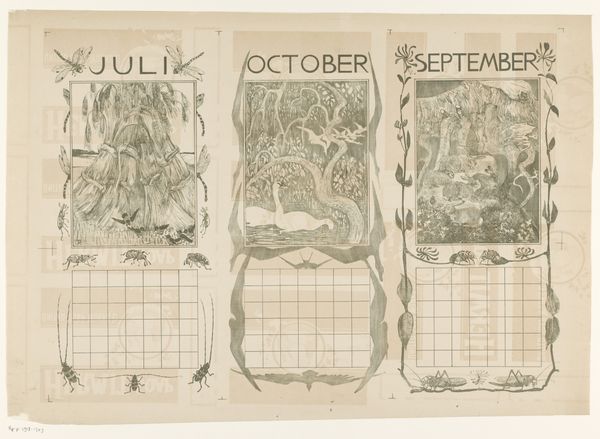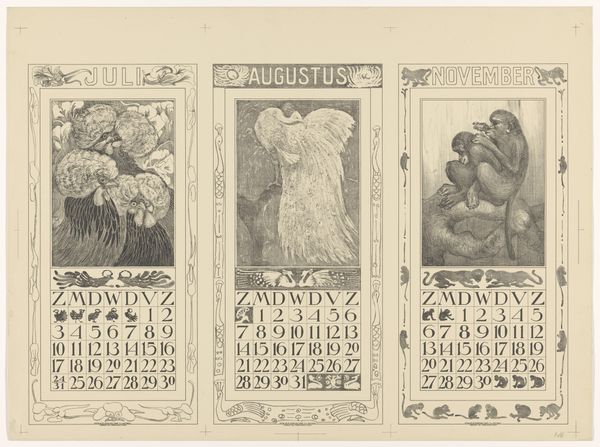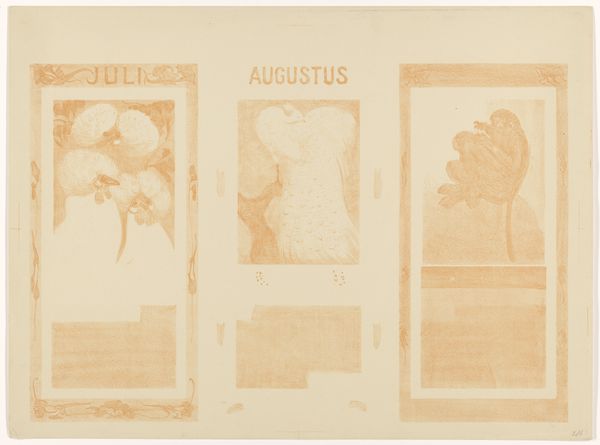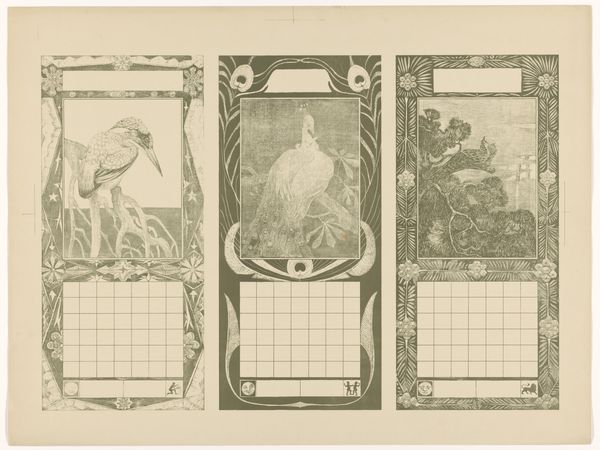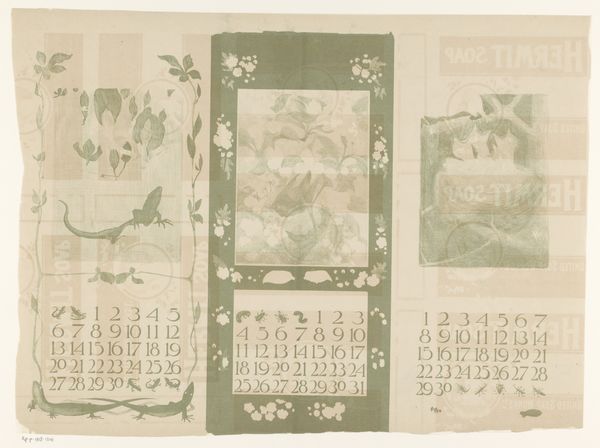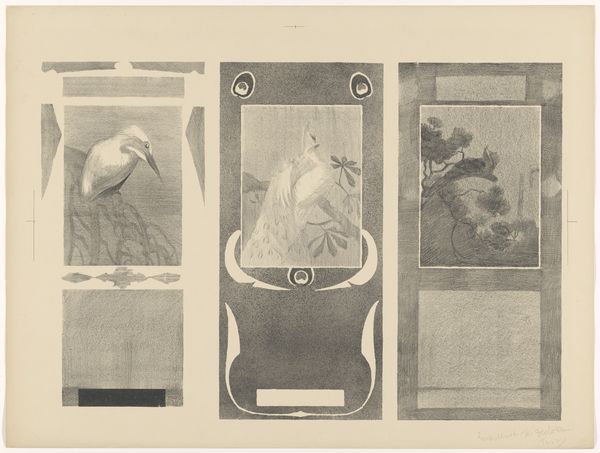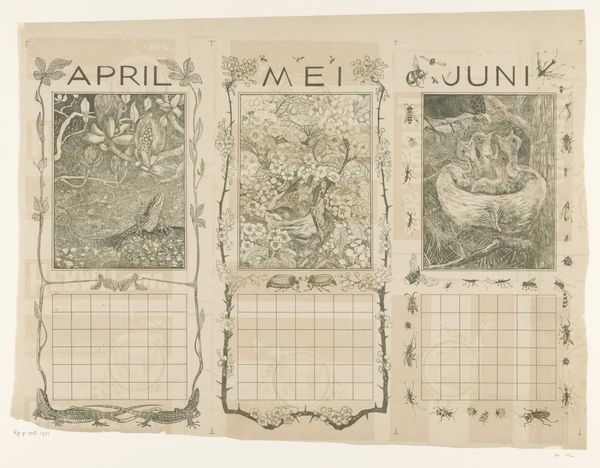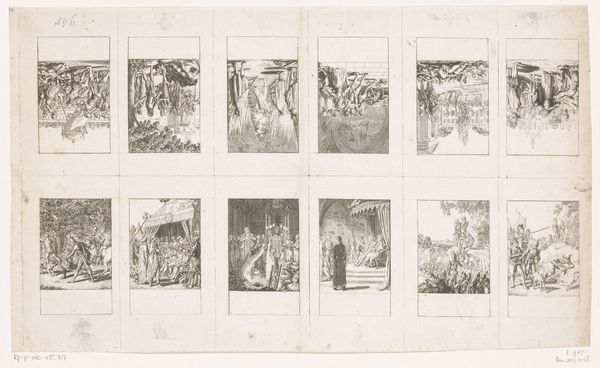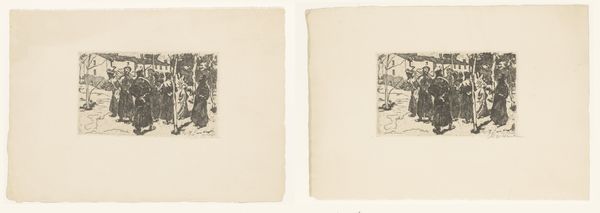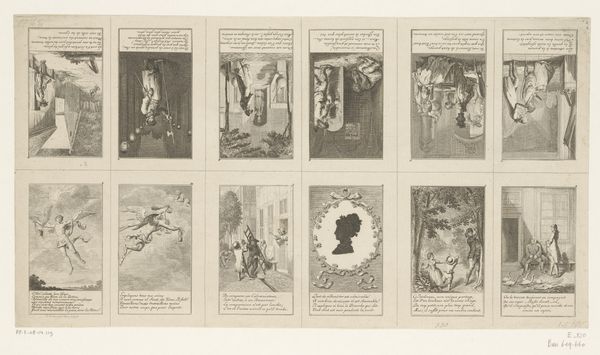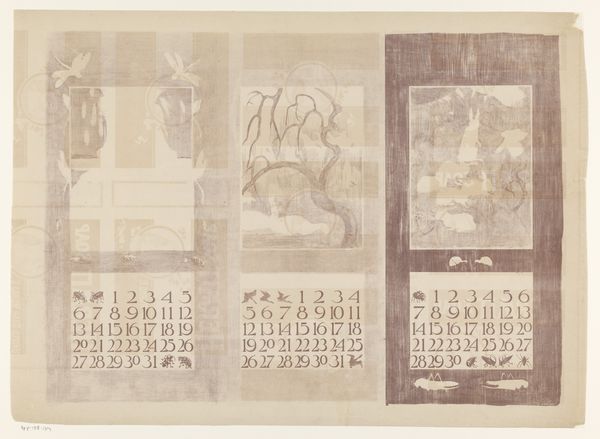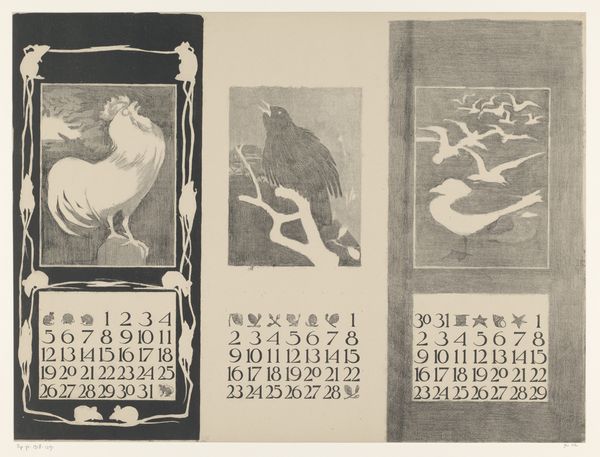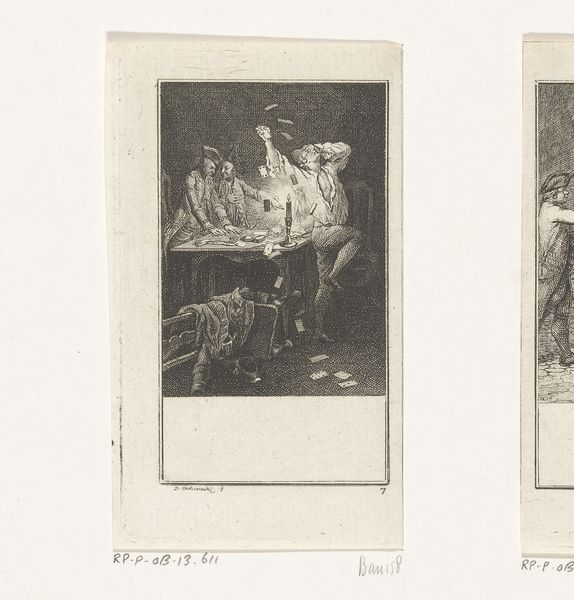
drawing, graphic-art, print
#
drawing
#
graphic-art
#
art-nouveau
# print
#
figuration
#
line
Dimensions: height 521 mm, width 702 mm
Copyright: Rijks Museum: Open Domain
Curator: Here we have Theo van Hoytema's "Calendars for July, August and November 1910," a lithograph showcasing the artist's elegant Art Nouveau style. What’s your initial reaction to it? Editor: Well, my first impression is a sense of serene melancholy. The subdued green palette, combined with the almost ghostly figuration, evokes a quiet, contemplative mood. Curator: Absolutely. Hoytema often imbued his work with profound symbolism rooted in nature. July's flowers represent summer's abundance and vitality. But observe August's central panel—it depicts an almost translucent image, a figure which may well represent fragility, transformation perhaps linked with late summer. And what do you see there? Editor: The overall compositional structure strikes me too. The triptych-like layout, almost a study in contrasts. The density of the flowers of July versus the more ethereal presentation of the figure representing August, all culminating into a barren scenery for November, creating a nice tonal rhythm. Curator: You are right. The placement of those elements in the picture plane seems to reflect a progression towards darker days and contemplation, reflecting autumn’s somber feel. Remember that calendars not only told people what to do, but are also about seasonal change. The artist is imbuing nature with memory, creating cultural echoes across these images. Editor: It is intriguing how the stylistic details contribute to its subtle complexity, those vegetal, whiplash lines defining the frames echo the burgeoning imagery of the Art Nouveau movement itself, yet never overpowering the symbolic images within each month’s picture. It balances the ornate with the simplistic. Curator: Exactly, he captures a tension that I think he found interesting and powerful, even poignant. Van Hoytema's fascination with nature often had a melancholy edge. He believed art could reveal our deep connections to the natural world and prompt reflection on its inevitable cycles. Editor: Reflecting on the dialogue of art and cultural continuity we’ve unearthed, it is clear that by deconstructing those stylistic and pictorial decisions, we come away from this brief calendar with so much food for thought. Curator: Indeed, art reminds us that our cultural roots intertwine intimately with the natural rhythms around us.
Comments
No comments
Be the first to comment and join the conversation on the ultimate creative platform.
